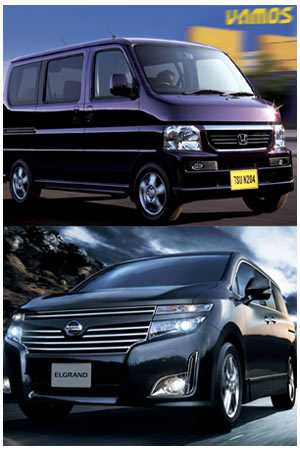The science of Japanese car names is always interesting to study. Above all, they must sound 格好いい kakko ii (cool, stylish), and since nothing sounds cooler to the Japanese ear than English, most cars here get their names from English words — like Honda Life and Subaru Legend, or Daihatsu’s Move Latte, or the Honda That’s (yes, “That’s” is the name of the car). Other car names, like Corolla or Tercel or Sylphy or Premacy, are designed to “sound” like English yet remain original so they can be trademarked. In recent years Japanese car companies have started mining Spanish as a source for car names, since Spanish and Japanese are very close phonetically — both have the same five basic vowels, and speakers of one language can learn to speak the other with very little accent. This has resulted in a large number of Spanish-derived car names, like Daihatsu’s little van Vamos (I love that name), Nissan’s El Grand, Toyota’s Carina and Familia, Mitsubishi’s Diamante and Viento, and the Subaru Stella (fitting, since subaru is the Japanese name for the Pleiades star cluster). Every once in a while, of course, they come up with car names that have embarrassing meanings, like the Mitsubishi Pajero, which is Spanish for “wanker,” or Mazda Laputa, Spanish for “the whore.” Laputa, of course, is one of the four kingdoms visited in the satirical novel Gulliver’s Travels, and writer Jonathan Swift was well aware of the meaning of the word in Spanish…so there’s a good chance we’re all being trolled from the year 1726.

Many Japanese car names are based on Spanish.















